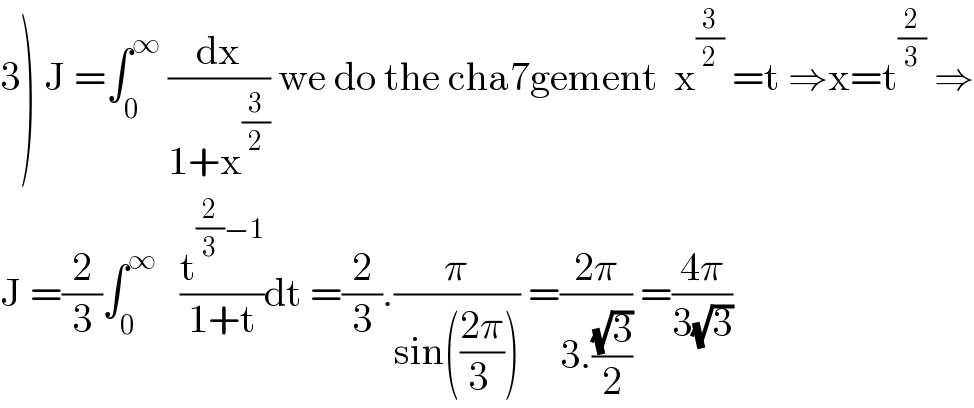
Question and Answers Forum
Question Number 131247 by bramlexs22 last updated on 03/Feb/21
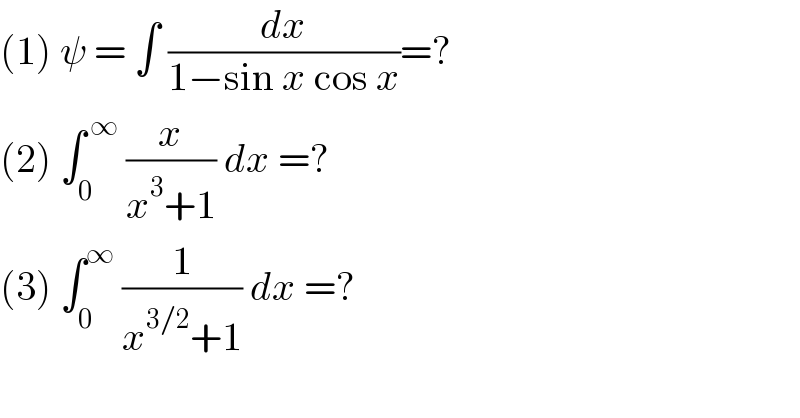
Answered by liberty last updated on 03/Feb/21
![Evaluate ∫_0 ^( ∞) (x/(x^3 +1)) dx. (2) L = ∫_0 ^( ∞) (x/(x^3 +1)) dx ; replace x with (1/x) L=∫_0 ^( ∞) ((1/x)/((1/x^3 )+1)) .(−(dx/x^2 )) = ∫_0 ^( ∞) (dx/(1+x^3 )) now we find that : 2L=∫_0 ^( ∞) ((x+1)/(x^3 +1)) dx 2L = ∫_0 ^( ∞) (1/(x^2 −x+1)) dx ; L=(1/2)∫_0 ^( ∞) (dx/((x−(1/2))^2 +(((√3)/2))^2 )) L= (1/2).(2/( (√3))) [tan^(−1) (((x−(1/2))/((√3)/2)))]_0 ^∞ = (1/( (√3))) [ tan^(−1) (((2x−1)/( (√3)))) ]_0 ^∞ L= (1/( (√3))) ((π/2)−(−(π/6)))= ((2π(√3))/9).](Q131249.png)
Answered by liberty last updated on 03/Feb/21
![Solve ψ = ∫ (dx/(1−sin x cos x)) (1) ψ=∫ (dx/(1−sin x cos x)) = ∫ ((sec^2 x)/(sec^2 x−tan x)) dx ψ=∫ ((d(tan x))/(tan^2 x−tan x+1)) ; [ change variable t=tan x ] ψ=∫ (dt/(t^2 −t+1)) = ∫ (dt/((t−(1/2))^2 +(((√3)/2))^2 )) ψ= (2/( (√3))) arctan (((t−(1/2))/((√3)/2)))+c ψ=(2/( (√3))) arctan (((2t−1)/( (√3)))) + c = (2/( (√3))) arctan (((2tan x−1)/( (√3))))+c ψ= ((2 arctan (((2tan x−1)/( (√3)))))/( (√3))) + c](Q131250.png)
Commented by malwan last updated on 03/Feb/21

Answered by liberty last updated on 03/Feb/21
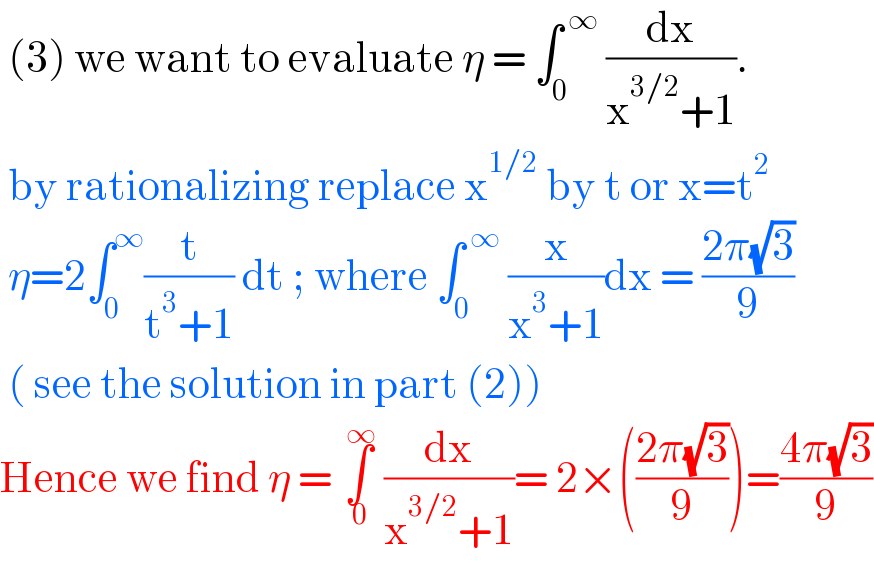
Answered by Ar Brandon last updated on 03/Feb/21
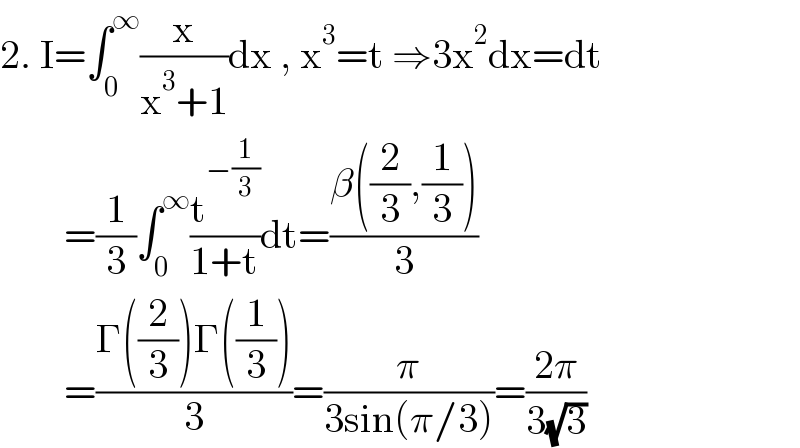
Commented by Engr_Jidda last updated on 03/Feb/21

Commented by malwan last updated on 03/Feb/21

Commented by Engr_Jidda last updated on 04/Feb/21

Answered by Dwaipayan Shikari last updated on 03/Feb/21

Answered by mathmax by abdo last updated on 03/Feb/21
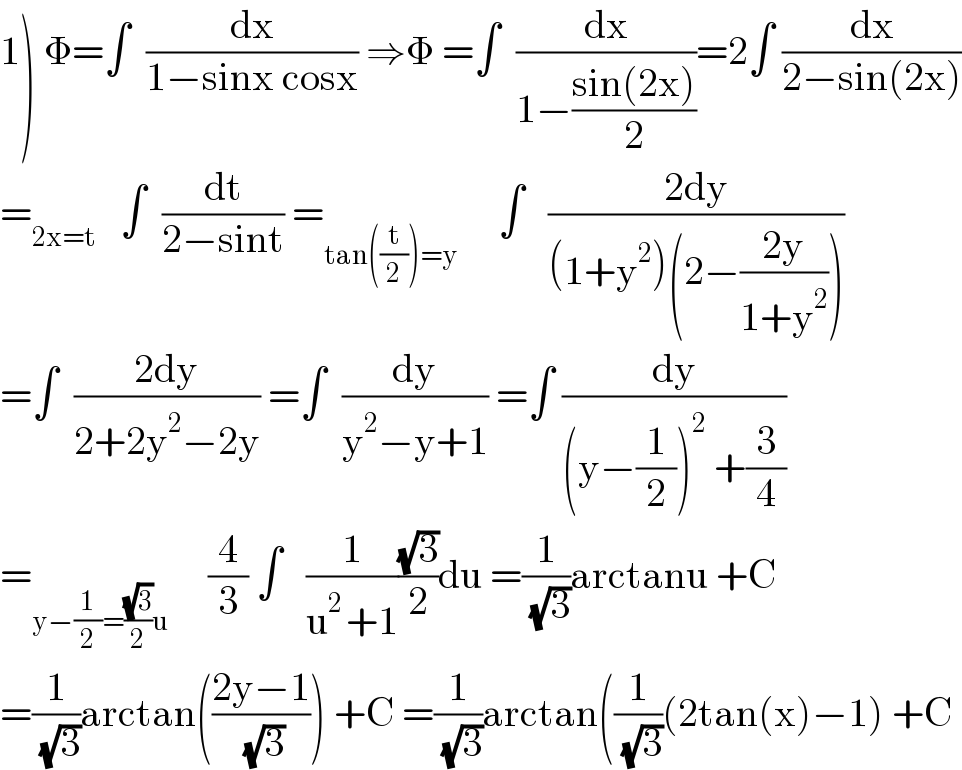
Answered by mathmax by abdo last updated on 03/Feb/21
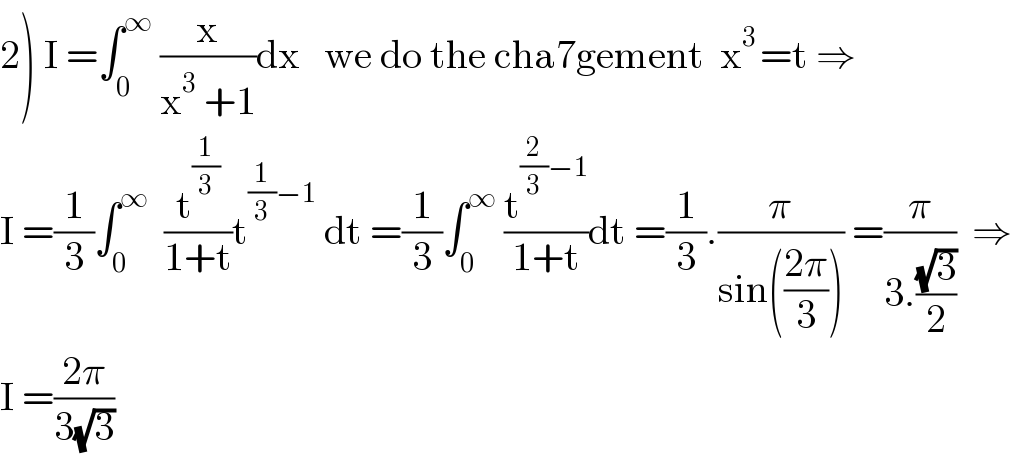
Answered by mathmax by abdo last updated on 03/Feb/21
